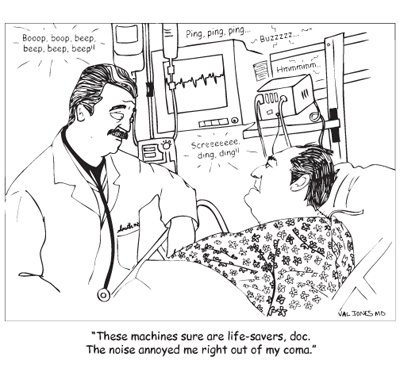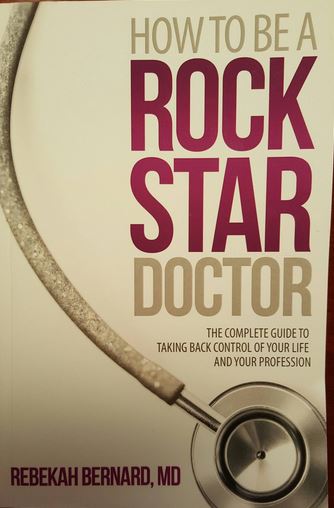April 18th, 2011 by admin in Health Tips
1 Comment »


It happens to everyone from time to time: a thorny issue sprouts up, a worry takes root. Soon those roots dig in so deeply and spread so wide that they leave little room for anything else to grow. Worrying, searching for a solution, and forecasting the future move from preoccupation to full-time work.
When that starts to happen, it’s critical to call a timeout, explain stress experts Herbert Benson, MD, and Aggie Casey, the medical editors of Harvard Medical School’s Stress Management Special Health Report. Certain hormones fuel the body’s stress response (also dubbed “fight-or-flight”), speeding breathing and heartbeat, directing extra blood flow to the brain and muscles, perking up the immune system, and triggering other changes that prepare your body to respond to a perceived threat. At times, the stress response is appropriate and necessary, helping us rise to meet physical and emotional challenges. But stress hormones that are triggered too often or stuck in overdrive can fuel worrisome health problems—from headaches and heartburn to high blood pressure and heart disease. Read more »
*This blog post was originally published at Harvard Health Blog*
April 14th, 2011 by admin in Health Tips
No Comments »


At a Harvard Medical School talk on migraine and food, a nutritionist from Harvard-affiliated Beth Israel Deaconess Medical Center delivered a message that people in the audience probably didn’t want to hear: “There are no specific dietary recommendations for migraine sufferers,” said Sandra Allonen. But she did have some advice to offer—and she emphasized that the connection between food and migraine is a very individual one.
Several foods have been associated with triggering migraine. None of them has been scientifically proven to cause migraines, explained Allonen, but many people report a link between eating these foods and getting a migraine. Possible migraine triggers include: Read more »
*This blog post was originally published at Harvard Health Blog*
April 10th, 2011 by admin in Book Reviews
No Comments »


Narouze SN, ed. Atlas of Ultrasound-Guided Procedures in Interventional Pain Management. Springer 2011, 372 pages, 465 illustration, $189.00.
In 1941, Dr. Karl Theodore Dussik of Austria introduced the idea of using ultrasound waves as a diagnostic tool. Over the next few decades he, along with others like Professor Ian Donald of Scotland, developed the practical technology and applications of ultrasound in the field of medicine. Since then, ultrasound (US) has become progressively more useful across a wide range of medical specialties, for both diagnostic and therapeutic procedures. US is quickly becoming the imaging modality of choice to guide practitioners in pain management and musculoskeletal interventions. Although fluoroscopy has long been a mainstay in image-guidance for such procedures, US provides an attractive alternative given its superior soft tissue resolution, allowance of real-time needle guidance, absence of iodinated contrast and lack of ionizing radiation.
The Atlas of Ultrasound-Guided Procedures in Interventional Pain Management by Narouze et al. is a comprehensive review of the principles of US-guidance as an aid in current pain management practices. It is divided into six parts and 30 chapters arranged by system and discipline. Leading experts in each discipline have contributed to this body of work, providing an extensive literature review encompassing each chapter. This text is meant to serve as a user-friendly manual, covering the anatomy, treatment rationale, and technical aspects of US-guided interventional pain management procedures. Read more »
*This blog post was originally published at AJNR Blog*
April 5th, 2011 by admin in Opinion, Quackery Exposed
No Comments »

Everybody’s Doing It
One argument that often comes up when skeptics and proponents of so-called complementary and alternative medicine (CAM) debate is the question of the popularity of various CAM practices. Advocates of CAM often claim these practices are widely used and growing rapidly in popularity. Obviously, CAM proponents have an interest in characterizing their practices as widely accepted and utilized. Even though the popularity of an idea is not a reliable indication of whether or not it is true, most people are inclined to accept that if a lot of people believe in something there must be at least some truth to it. The evidence against this idea is overwhelming, but it is a deeply intuitive, intransigent notion that can only rarely be dislodged.
It might therefore be useful to get some idea of whether or not the claims of great popularity for CAM treatments are true. If they are not, fruitless debates about the probative value of such popularity could potentially be avoided, and it might be possible to diminish the allure associated with the belief that “everybody’s doing it.” Read more »
*This blog post was originally published at Science-Based Medicine*
April 1st, 2011 by admin in Book Reviews
No Comments »


Hall WA, Nimsky C, Truwit CL. Intraoperative MRI-Guided Neurosurgery. Thieme 2010, 272 pages, $159.95.
This book is a multiauthored text edited by three senior authors who have a tremendous experience in the use of intraoperative MRI technology. The book is divided into five sections that describe the various iterations of iMRIs that are available, its application for minor procedures, the resection of neoplastic lesions, and its role in the management of nonneoplastic disorders. The last section focuses on the future improvements in design that are likely to improve surgical access and utility of this burgeoning technology.
The first section describes the characteristics of iMRI machines that are available in the low, medium and high field strength. The reader gets a very good idea about the relative benefits and limitations of each of these machines. Hospitals that may be in the process of deciding which technology to go in for may use this information as a good guide. This section also highlights the optimal pulse sequences that may help differentiate tumor-brain interface, perform intraoperative fMRI and DTI tracking and detect complications related to brain ischemia and hematoma formation. The chapters in this section are well illustrated and show both the technology and the images obtained with various units. The chapter on optimal pulse sequences is very well written and discusses the specific pulse sequences that can help obtain the maximum intraoperative information with the least amount of time. These sequences can be tailored to provide not only anatomical details but also to help obtain both DTI and functional activation data for intraoperative neuronavigation, thereby accounting for brain shifts and movement of eloquent tracts during surgery. The authors describe the challenges of this methodology. Specific anesthetic challenges that restrict the use of standard monitoring equipment have been outlined. These include patient access, length of operative procedure, influence of magnetic field and RF currents on the functioning of the equipments and the images obtained, and risk of migration of ferromagnetic instruments, among others. This has led to the development of MR compatible anesthesia and monitoring equipment. Safety issues and steps needed to ensure reliability of equipment have been described. Read more »
*This blog post was originally published at AJNR Blog*

















